 As the leader of the newly created sourcing and research team for Wayfair’s Analytics & Engineering Recruiting team, I get a unique perspective of the Boston hiring landscape.
As the leader of the newly created sourcing and research team for Wayfair’s Analytics & Engineering Recruiting team, I get a unique perspective of the Boston hiring landscape.
Just like many of our recruiting counterparts elsewhere, engaging with the local candidate market poses unique challenges. Outreach is a repetitive, thankless, and often futile effort. Candidates are more familiar with companies as brands, not employers. More and more people are searching for an intuitive mobile application process. Where does the disconnect lie between connecting employers with potential employees? What does it take to crack the Boston talent market?
Wayfair recently partnered with Entelo to bring together over 100 locals in the talent acquisition space to not only answer these questions, but also to share how-to’s and strategies for better engaging with candidates.
We gathered in our Boston office and kicked off the night with a keynote by Madeline Laurano of Aptitude Research Partners, who discussed the growth and impact of technology on recruiting and HR, especially in the candidate experience. The evening went on with a panel discussion featuring HubSpot, Wayfair, and TripAdvisor’s talent teams on their own challenges and solutions to hiring talent in the Boston area, followed by breakout sessions focused on data-driven hiring and talent metrics, recruitment marketing, and candidate engagement techniques.
A huge variety of questions were asked on a wide array of topics! Here are some key themes that came up over and over again during the course of the night:
Personalized outreach continues to be a main focus in hiring. Write as you’d speak!
- We’re in an age of recruiting spam overload! Between LinkedIn messages, templated email blasts, and a vast number of software tools to help recruiters find qualified candidates, personalized messaging is more important than ever.
- How would you talk with your prospective candidate if you were standing next to one another at a bus stop? Take that same tone and replicate it in your messaging, regardless of the platform. Also, avoid clichéd buzzwords! Of course we know it’s a “great career opportunity.” Tell us about the company. Tell us about YOU.
- A/B test response rates based on who’s sending the candidate outreach. The Send on Behalf of functionality in Entelo is being used to great effect, since candidates are more likely to respond to a hiring manager than a recruiter, said Eric Trickett, Head of Global Product and Engineering Recruiting at TripAdvisor.
Build communities of engaged candidates by paying attention to the message you’re conveying at every stage of the hiring process. Be human, not just a company.
- Inbound recruiting, engagement, and employment branding – these three are closely interconnected. For the recruiters at HubSpot, developing talent communities of engaged candidates has been a huge differentiator. Build relationships with candidates before they even start looking for a job, said Becky McCullough, HubSpot Director of Recruiting. Hold meet-ups where product teams can talk about what they’re working on and engineers can learn about innovation.
- When developing your employer brand, lean on the familiarity of your corporate brand – “especially if you’re a consumer brand, and ride the coattails of that,” emphasized Wayfair Senior Global TA Director Kevin Murray.
- When recruiting candidates from outside your locale, beat the drum for other great companies in your city. It boosts your own employer brand and can inspire enthusiasm by offering an attractive, broader working environment
- There’s a big difference between employee brand and employer brand. Your employee brand is what it’s like to work at the company; your employer brand is about what the company itself does and its reputation out in the world. It’s important for recruiters to clearly understand the employee brand and focus on the merits from that angle.
Prioritize a great candidate experience online, in-person, and on mobile.
- Laurano pointed out that candidate experience has now become employers’ top priority, whereas in years past it didn’t even crack the top 10 for people in talent acquisition. Focus on the wants and needs of the candidate instead of those of the recruiter and hiring manager. The number of open positions for skilled workers far outweighs the existing talent pool, so creating a simple, compelling, and enjoyable experience has become the name of the game.
- The mobile application experience is still clunky and outdated, essentially replicating a browser-based model. That’s slowly-changing, with a focus on fewer screens and new concepts such as AI being incorporated into the applicant experience. Check out tools like Olivia, a “Personal A.I. Recruiting Assistant” where candidates simply talk with their phone to apply to a job.
We’re definitely well underway with a new phase of applicant-centric hiring, and sourcing and recruiting practices that use technology, customization, and an interactive personal approach to attract talented employees in the area. How are you preparing for a new year of hiring in your own talent markets?
Thank you to our speakers at Cracking the Boston Talent Market: Madeline Laurano (Aptitude Research Partners), Becky McCullough (HubSpot), Eric Trickett (TripAdvisor), and Kevin Murray and Brad Williams (Wayfair).
Are you based in Georgia? Join us for Cracking the Atlanta Talent Market on January 19, featuring speakers Shally Steckerl, and talent pros from MailChimp, Pindrop, and Chick-fil-A!
Related articles:
9 Companies Getting Branding Right and What Talent Teams Can Learn From Them
From Branding, Sourcing, and Diversity to Data Analytics: Five Talent Powerhouse Takeaways
The High Value of Personalized Outreach with Entelo Engineer James Hwang

